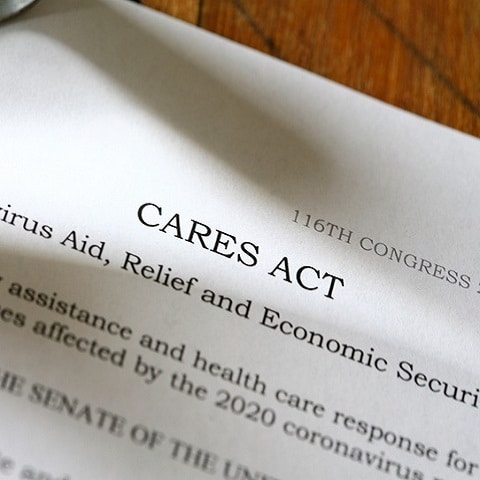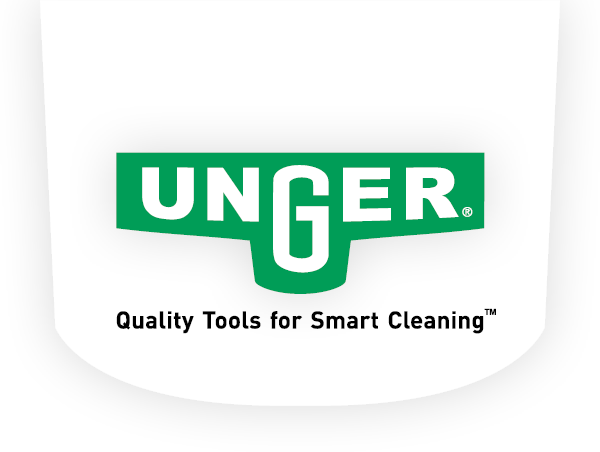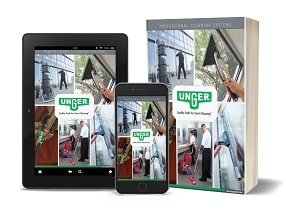NEW! Powerful Nano Filtration with Unger's HydroPower® Nano See The Product

CARES Act Enables Schools to Invest in Modern Campus Cleaning Equipment
In March 2020 Congress passed the CARES Act to provide approximately $31 billion in emergency education funding to students, schools, institutions and states across the country. Congress also set aside approximately $13.2 billion of the $31 billion for the Elementary and Secondary School Emergency Relief Fund (ESSER Fund). To access the funds, the Department of Education will award grants to state educational agencies (SEAs) for the purpose of providing local educational agencies (LEAs) with emergency relief funds to address the impact that COVID-19 has had, and will continue to have, on schools.
While the CARES Act funding has begun flowing to the states with a September 2022 deadline for money to be spent, what many local educational institutions aren’t aware of is the extent to which the awarded monies can be applied. Looking at the allowable uses below, for schools that may have been previously unable to budget for the commercial cleaning and disinfecting equipment they wanted, they now have the opportunity to make those investments to aid in combating the spread of infectious disease.
ESSER Funding for Cleaning Facilities
The CARES Act outlines twelve allowable uses for the $13.2 billion in the package’s K-12 relief fund, providing LEAs substantial flexibility in determining how best to use their funds. With many schools focused on how to safely and effectively continue learning, the Department of Education encourages LEAs to target funding on activities that support remote learning, but allowable ESSER funding uses also include the following that address investments needed to clean and sanitize facilities:
- Training and professional development for staff of the local educational agency on sanitation and minimizing the spread of infectious diseases.
- Purchasing supplies to sanitize and clean the facilities of a local educational agency, including buildings operated by such agency.
Purchasing Professional Cleaning Equipment with ESSER Funds
School districts will need to prioritize the use of ESSER funds to accommodate both immediate and longer-term needs, making sure that not only are specific expenditures allowed, but also to maximize the return on investment. For schools that select to allocate funding towards purchasing supplies to clean and sanitize their facilities, procuring the right cleaning tools can ensure the safety of property, staff and students, as part of near-term re-opening plans and future strategies to combat the spread of all infectious diseases. Facilities and custodial staffs should look to allocate their CARES Act monies that will not only help them achieve healthier facilities during the COVID-19 pandemic, but that will also provide:
- Greener Cleaning Options
As schools strive to the spread infectious germs, they should consider the complementary benefits of greener cleaning. Any cleaning product that can perform double duty – effectively remove germs and reduce the reliance on harsh cleaning chemicals – will facilitate an overall healthier environment and provide a measurable long-term cost savings associated with using fewer cleaning products.
- Increased Speed and Ease of Use
Commercial cleaning tools designed with ease of use top of mind keep workers safer and decrease the average labor time needed to perform tasks. With classrooms and other public areas requiring more frequent cleanings, the speed in which routine cleaning jobs can be accomplished has grown as a priority. And if the cleaning products you choose are easy to use, staff training will not hinder or delay implementing new cleaning protocols.
- Improved Cleaning Effectiveness
COVID-19 has forever impacted the way custodial staffs will clean moving forward. To support new cleaning protocols, some schools may need to update to modern cleaning technologies that will help them clean better and faster. For example, cleaning floors and surfaces with microfiber-based cleaning solutions, as opposed to more traditional cotton-based cloths and mopheads, and implementing a color-coded cleaning system designed to keep cross contamination risks to a minimum.
For more information and recommendations for classroom cleaning for infectious disease control, click here. For a comprehensive list of Unger’s campus cleaning solutions, visit us online.
Accessing and Tracking ESSER Funding
Funds flow from the Education Department to SEAs, which then are required to allocate no less than 90% to LEAs. School districts (LEAs) must apply to the relevant SEA which will distribute subgrants ESSER using the Title I formula, however, once distributed to districts, they’re not considered Title I funds.
LEAs may use ESSER funds for any allowable expenditure incurred on or after March 13, 2020, the date the President declared the national emergency due to COVID-19 – not the date that the funds were received. These funds must be spent by September 30, 2022, with any unspent funds going back to the U.S. Education Department.
Within 60 days of receiving funds, states must submit a report to the Department on its monitoring plan for ensuring funds are only applied to allowable uses. Both SEAs and LEAs must track the use of ESSER funds separately so they can report on them in the future.
The Department will monitor the use of all ESSER funds, which are subject to audit requirements under the Single Audit Act and to review by the Government Accountability Office. The Department’s Office of the Inspector General may audit program implementation, as may any other federal agency, commission, or department in the lawful exercise of its jurisdiction and authority.
If LEAs are uncertain of the appropriateness of coding an expenditure to ESSER, these three questions can help determine allowability:
- Does this expenditure prevent, prepare for, and respond to coronavirus?
- Will coding this expenditure to coronavirus in 2019-2020 still allow the LEA to meet MOE (maintenance of efforts) requirements?
- Did this expenditure occur on or after March 13, 2020?
For more information, the Office of Elementary and Secondary Elementary has provided frequently asked questions about using ESSER funding.
Next Steps for Educational Facilities
As the start of school nears, and with many unknowns regarding in-person vs. remote learning, this is for certain: cleaning for infectious disease control protects staff, students, volunteers and community members. To achieve the highest quality of clean, with efficiency, ease of use and green cleaning top of mind, schools have new opportunities to invest their budgets in ways not previously possible. And with the right tools, classrooms, gymnasiums, restrooms, buses and common spaces can facilitate the establishment of healthier learning and social environments.
Request a Complimentary Product Demonstration
or
Request a Comprehensive Catalog of Campus Cleaning Equipment
“I’ve been in the industry for 30 years and Unger is truly on the cutting-edge of innovation.”
– Byron Coleman, Operations Manager,Building Services
University of Maryland


